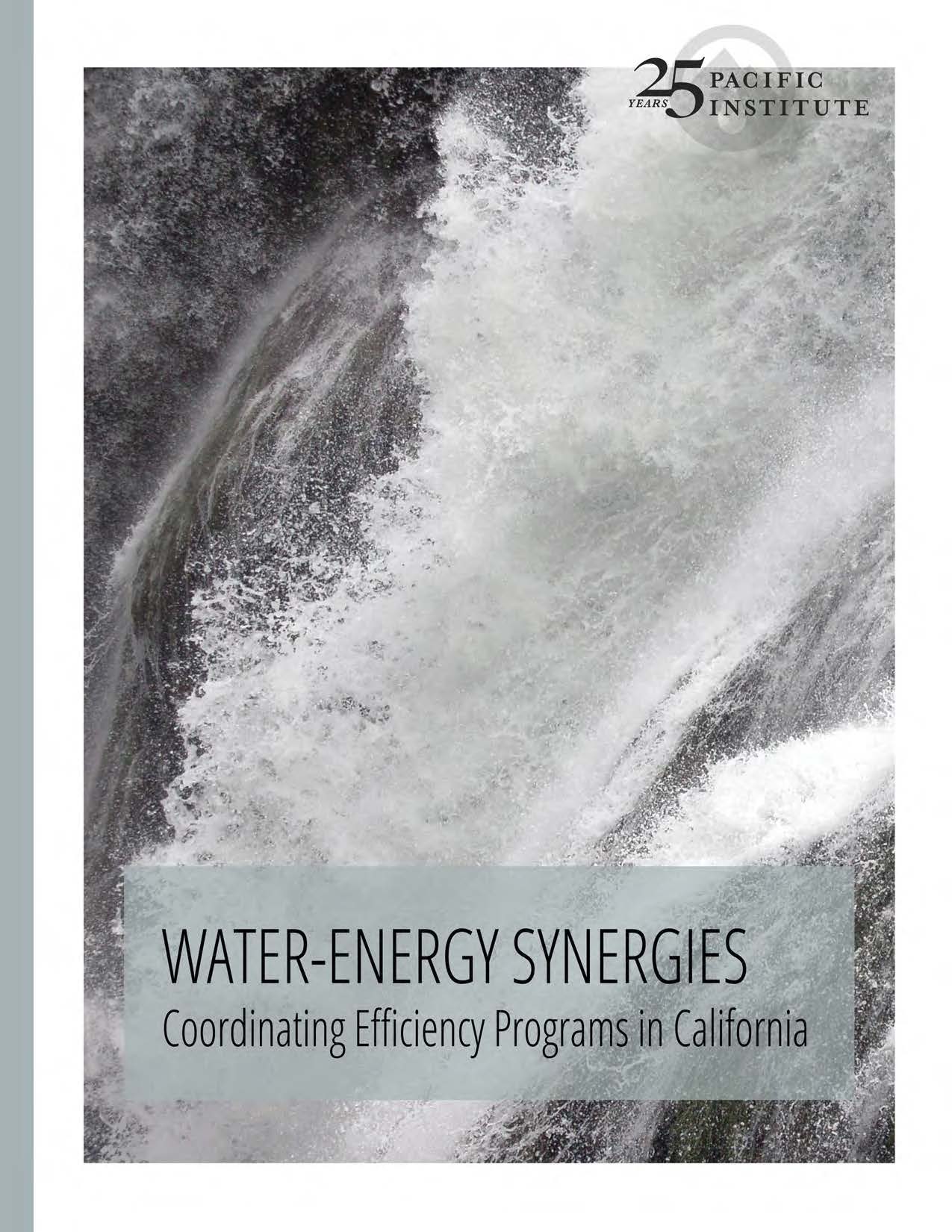 Several studies have demonstrated that saving water also saves energy. With 19% of the state’s electricity use and 32% of all natural gas consumption being related to water, coordinating water-energy efficiency efforts can provide a significant opportunity to achieve greater savings for both water and energy utilities and in turn for their customers, according to a new study by the Pacific Institute, Water-Energy Synergies: Coordinating Energy Efficiency Programs in California.
Several studies have demonstrated that saving water also saves energy. With 19% of the state’s electricity use and 32% of all natural gas consumption being related to water, coordinating water-energy efficiency efforts can provide a significant opportunity to achieve greater savings for both water and energy utilities and in turn for their customers, according to a new study by the Pacific Institute, Water-Energy Synergies: Coordinating Energy Efficiency Programs in California.
Many types of programs that are designed to conserve water, whether from saving hot water indoors to using less water outdoors, can jointly achieve water and energy efficiency goals; in many cases it can be cheaper to save energy through water conservation and efficiency measures than through current and planned energy efficiency programs, the study says.
Coordinating water and energy efficiency programs also provides an opportunity to leverage the efforts of local, regional and state entities to achieve several statewide policy objectives such as AB32’s goal to reducing greenhouse gases or the per capita water use reductions envisioned in the Water Conservation Act of 2009. “Coordinating programs can be an important tool to meet efficiency goals, allowing the state to meet critical policy objectives and saving Californians’ money,” said Heather Cooley, co-director of the Pacific Institute Water Program.
However, despite this potential, water and energy utilities in California have implemented only a limited number of programs designed to capture these savings. To determine why, researchers interviewed and surveyed California water and energy managers; they reported several reasons for this including funding issues, limited staff time, water-related pricing policies, and uncertainty about how to allocate costs and benefits among project partners, as well as an absence of established relationships between potential water and energy partners.
“We examine the barriers to coordinated water and energy efficiency programs and discuss, through case studies, ways that several California utilities have been able to overcome these barriers,” said Ms. Cooley. The case studies highlighted in the report include PG&E’s joint program with Bay Area water agencies to provide rebates for high efficiency washing machine purchases, SoCal Gas and West Basin’s program for commercial kitchens, and SoCal Gas and LADWP’s new agreement to coordinate multiple water-energy use programs.
The researchers then provide a series of recommendations for water and energy utilities such as designating a staff member as the lead for pursuing water-energy program opportunities, exploring ways to leverage some of the new statewide energy efficiency programs, and developing guidelines for allocating water, energy, and cost savings amount project partners.
“Energy savings, and the associated cost savings, can make many water-efficiency measures cost effective,” said Kristina Donnelly, co-author of the report. “Some water and energy utilities have already been resourceful and innovative in bringing programs to fruition. Nearly everyone we interviewed about such programs was passionate about developing these partnerships and keen to do more.”


